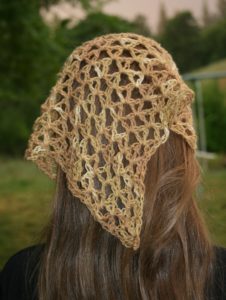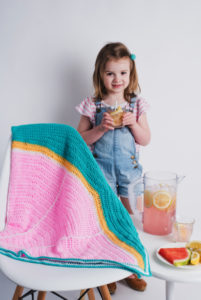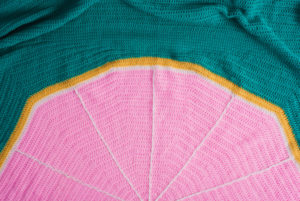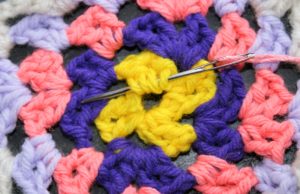 Spring weather has really descended upon my home, and with it the need for fun and whimsical attire and free patterns. In addition to wanting to spice up my wardrobe, I have a bit of the spring cleaning bug. In undertaking my cleaning projects I find myself being distracted by small piles of yarn, left over partials of skeins.
Spring weather has really descended upon my home, and with it the need for fun and whimsical attire and free patterns. In addition to wanting to spice up my wardrobe, I have a bit of the spring cleaning bug. In undertaking my cleaning projects I find myself being distracted by small piles of yarn, left over partials of skeins.
In order to kill two birds with one stone, I have some up with a simple project to help my daughter up her hair back, and have a retro vibe, a hair scarf.
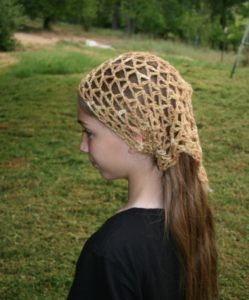 The hair scarf is worked from the back point and worked with increases on both sides until it is the desired length.
The hair scarf is worked from the back point and worked with increases on both sides until it is the desired length.
The airy stitch offers a lot of potential that can easily change the drape by changing fiber types. My sample is made up of a blend of Suri Alpaca, Wool, and Nylon, but changing to a cotton blend or a silk and the drape will be even greater.
If you have a bit of partial skeins around, and want to create a change for spring, check out my free pattern below.
Materials:
- About 100 yards of light weight yarn
- Size I/9/5.5mm size hook
Gauge is not import for this project
Special Stitches
Beginning V Stitch (Beg V st): Ch 4, dc in same stitch
V Stitch (V st): (dc, ch 1, dc) in same space
Abbreviations:
Bet = between
Ch = chain
Dc = double crochet
Rep = repeat
Sk = skip
Sp(s) = space(s)
Row 1: Ch 5, dc in first ch, turn.
Row 2: Beg V st, sk 1 ch, V st in next ch, turn.
Row 3: Beg V st, V st bet Beg V and V st, sk 1 ch, V st in next ch, turn.
Row 4: Beg V st, V st bet each V st across, sk 1 ch, V st in next ch, turn.
Row 5-23: Rep Row 4. Fasten off. Weave in ends, block.

